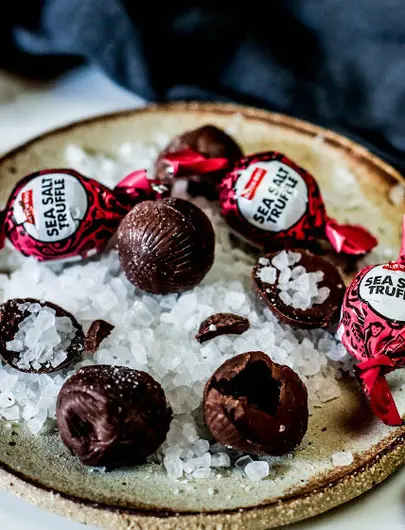Salt is salt is salt, right? Ummm…not quite. GMB Nutritionist Melissa Fine shares the lowdown on all things salt: whether it’s good for you, bad for you, and the salt varieties that get our tick of approval.
First things first, do we need salt in our diet?
The answer is YES, the reason being that salt is an essential electrolyte, meaning it helps to regulate cellular fluid balance. Without salt, our nerves and muscles aren’t able to function as they should.
Is there such thing as too much salt?
The answer again is YES, the reason being that a diet containing more than the daily recommended intake of salt may have negative health implications for some individuals, potentially resulting in high blood pressure – which increases the risk of heart disease. According to the World Health Organisation, the majority of people consume twice as much salt as they should be eating on a daily basis.
What is the recommended daily intake of salt?
According to the National Health and Medical Research Council (NHMRC), we should be consuming under 2,300mg of sodium (salt) per day, and a minimum of 1,600mg (that’s 4 grams) per day. If you’re looking at the nutritional info panel on a packaged food, Nutrition Australia recommends going for foods with less than 120mg of sodium per 100g.
How can I cut back on my salt intake?
Eat unprocessed and minimally processed foods and you’ll instantly be cutting back on your salt intake. Skip the ready-made meals, bottled sauces, salad dressings and processed meats (like salami and sausages) and opt for a wholefood diet instead. Think fresh produce, whole grains, and quality protein like eggs, fish and meat, none of which have salt added.
The Good Salt
Complement a wholefood diet with these sources of salt. Just a sprinkle is all you need
Sea Vegetables
(i.e., seaweed like dulse and kelp) are a particularly good source of salt; they’re also rich in the essential mineral iodine, which plays a large role in thyroid health. In fact, both bread and table salt – the kind you get in the salt shaker – are fortified with iodine as a means of preventing iodine deficiencies.
Murray River Pink Salt
Not only is this salt produced locally, it’s comprised of 100% mineralised brine that’s been naturally crystallised – the result being mineral-rich salt flakes, ‘processed’ by nature. A teeny sprinkle on whatever you’re eating looks really pretty too, and adds the finishing touch – be it on grilled salmon or homemade chocolate.
Sea Salt
AKA ‘Fleur de Sel de Guerande’, meaning ‘Flower of Salt’, the French view sea salt as the caviar of the salt family. With its delicate, subtly sweet flavour, and a moist texture that melts on the tongue, sea salt brings out the natural flavours inherent to a dish, whether that be a steak, salad, pasta sauce, or even chocolate. We can’t get enough of Alter Eco’s Sea Salt Truffles, where just a touch of sea salt balances out the chocolate’s sweetness and richness for the perfect flavour profile…holy yum!
Cut back on salt and you’ll likely find that your taste buds begin to appreciate the real flavours inherent to whatever you’re eating…so you’ll want to add nothing more than a grain of salt!
References
- www.nutritionaustralia.org/national/frequently-asked-questions/salt-and-hypertension

